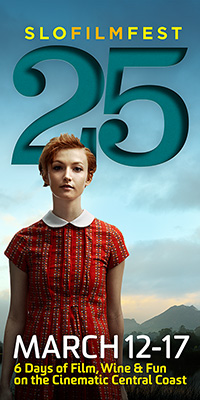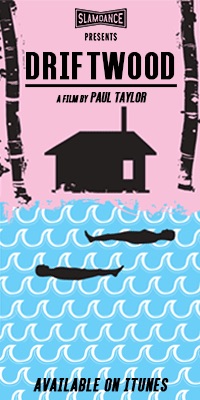One of my goals when I came to Cannes was to duplicate what I routinely would do when I cover Sundance: review the films that weren’t necessarily going to be covered ad nauseum by everyone else. And here, that means going to the screenings of films not in competition, the market screenings, the smaller “off-site” screening rooms, etc. So, Saturday, the 16th was a big day to see what damage I could do in that pursuit as I headed off to the find screening rooms at the Gray D’Albion hotel/shopping mall complex. On my own, it took me awhile to ferret out where the hell this place was, but eventually I made it there and took my seat to watch #HORROR.
#HORROR
Tara Subkoff’s #HORROR, billed as being inspired by actual events, follows the descent into horror that a group of spoiled and hateful 12 year old girls, who are compulsively addicted to their cell phones and a social media game, fall into when they are left alone with each other for a party. Wealthy, privileged, and unsupervised, each of the girls take turns saying hateful things and bullying each other. That alone would be more than enough to qualify and quantify the “horror” in the film, but there happens to be a killer on the loose to deal with as well.
While #HORROR is focused primarily on the girls, the film also sports an unwieldy name cast of adults (Chloe Sevigny, Timothy Hutton, Natasha Lyonne, Balthazar Getty and Taryn Manning) playing the terrible parents of the terrible girls and the terrible parents’s terrible friends. That cast, while certainly a boon to the sale prospects of the film, proves a little bit of a distraction. Seemingly, more so is Subkoff’s approach to the film, which is to bombard the audience with layers upon layers of graphics that duplicate the brightly colored and garish social media game’s icons to punctuate deaths, etc. Bluntly, there is A LOT of editing work going on here. So, while each of the girls go through the typical list of problems (bulimia, cutting, etc.), it’s difficult to empathize with anyone due to the fact that story and character are constantly competing with the barrage of logos and emoticons and icons and yes, hash tags that are thrown up on the screen like a neon Technicolor yawn. However, that just may be Subkoff’s point. Therefore, judging or attempting to enjoy the film as a “horror thriller” where you actually care whether or not anyone survives the killing spree would likely lead to disappointment and frustration, as opposed to viewing the film primarily as a commentary on the effects a particular rarified social strata have on the children that are produced from that. Viewed as such, the film is truly horrifying.
THE EMPEROR’S NEW CLOTHES
Michael Winterbottom’s THE EMPEROR’S NEW CLOTHES places Russell Brand front and center as he attempts a Michael Moore-type call-to-arms political documentary alerting us all to the blatant crimes and gaming the system that the elite 1%, financial sector and the politicians that do their bidding legislatively engineer and perpetuate to the detriment of the rest of the population. Focused primarily on the UK, Brand begins with a history lesson as to the roots of this ill behavior from the economic policies of Milton Friedman to the economic crisis of 2008 through the present day. Facts regarding the outlandishness of billions upon billions in bonuses being paid out while no one was held accountable for the crash balanced against ongoing cuts in welfare benefits are interspersed with scenes of Brand either attempting to ambush interview some of the CEOs in question or post posters on their property shaming them for their actions and talking to people that are struggling to get by and make it in the shadow of all this financial malfeasance.
THE EMPEROR’S NEW CLOTHES is a documentary that seeks to speak truth to power and inspire people to take action on their own behalf, yet also entertain and be funny – because at his core, Brand is still a comedian whose instincts tell him to go for the laugh. So while the subject is a vital one, and the need for people to rise up collectively could be construed as more than dire, Brand (much like Moore at his less than greatest moments) undercuts and undermines his message by playing the entertainer as opposed to trusting the veracity of his argument. He is more than sincere and certainly well versed in the subject at hand – and Winterbottom deftly lays out the info so as to make it easily accessible and not policy wonkish or snooze-inducing – which is very important when working to deliver a message like this. However, haranguing a security drone on the ground floor when the target is the CEO in the penthouse muddies the “us vs. them” theme this kind of documentary needs in order to truly work as a call to arms. That being said, the information given is right on the mark and the intent is more than admirable and if even a handful of people are inspired to protest or at least to stop voting against their own interests in the UK or the USA, then the film would be a success.
INNOCENT KILLERS
Gonzalo Bendala’s INNOCENT KILLERS is a sly dark comedy about a university student needing both a passing grade to graduate and a lot of money to repay some thugs he is in hock to, who is offered a solution to both of his problems if he will just kill his professor. The professor, long racked by guilt over an accident which caused his wife’s disability, has had both a death wish he hasn’t been able to act on himself, as well as a hefty death insurance plan that will provide for a much-needed operation for her. What follows is a serious to the minute comedy of errors as the student enlists three of his friends to assist in the job, which proves much more difficult to pull off than they assumed as they deal with bad luck, bad timing, and their own dire misgivings over the task at hand.
INNOCENT KILLERS succeeds as an enjoyable and engrossing film ride seemingly in spite of itself. However, as the story unfolds, and the twists and turns manifest themselves, it becomes very apparent that there hasn’t simply been a method to the madness, but it has been well executed to the point of convincing the audience (in addition to the characters onscreen) that this is all serious business up to the final reel. You could imagine Bendala in the editing room, saying “Wait for it…wait for it…wait for it…” as he had the patience to keep up the ruse of seriousness until he absolutely had to give up the ghost. That discipline makes what would be a standard issue film into something considerably more enjoyable and special.
TAG
Sion Sono’s TAG begins with a group of schoolgirls on buses headed for a class outing, a picture of innocence and delightful fun as Mitsuko, in the midst of writing some poetry drops her pen and kneels down to pick it up. Suddenly, at that very moment a malevolent wind sweeps down shearing the tops off the buses and decapitating every single girl – except for Mitsuko. And thus begins a nightmare for Mitsuko as she immediately is on the run from the unexplained evil that pursues her, killing every other girl around her that fails to heed her warnings. From there, Mitsuko’s situation gets increasingly dire and more surreal as the lethal wind is joined by killer teachers, bent on mowing down all of their students with an inexhaustible supply of automatic weapons. Meanwhile, Mitsuko’s journey finds her changing identities as an older teenager and then a runner – all on the run from an undefined threat with very little assistance in the ways of clues to a way out other than a constant refrain of “Life is surreal. Don’t let it beat you.”
TAG gleefully ladles on the crazy with the surreal and the carnage in its world of “girls on the run.” In fact, a male doesn’t appear in the film until the end of the film as we finally are given some context and explanation as to what and why Mitsuko and her avatars have been haunted and terrorized by these threats. How much that explanation will satisfy the audience will likely depend on their willingness to accept the film’s conceits and how much stomach they have for grand suspension of disbelief. Of course, fans of Sono’s should eat all of this up with a spoon. Newcomers and those not as easily convinced to let the world he creates just wash over them may find themselves more than a little frustrated by the ride. But, make no mistake, a crazy and wildly inventive ride it is.
Following my binge of market screenings, I text Dave and Matt as to their dinner plans – no response, no answer, radio silence. Then, ironically, I run into both of them as I walk along Rue d’ Antibes to find a place to eat. Naturally, they have both selfishly already had dinner as a Cannes attitude clearly has already got to them. I’m surprised they aren’t both clad in suits and bow ties as we walk to a market so Matt can get a case of Coke for their room. I’m not kidding and yes, we have tried an intervention. It was a heartbreaking experience and A&E refused to air the episode because of the music rights, I think. Then again, I may be making all of this up because apparently this market is located in Nice. We finally get there and I think that Matt pays something like $90 for his case of Coke, but then again that’s addiction for you. I decide to hit up the Steak and Shake and then hang out with the guys for a while.
After talking films (what else) and having my burger and fries, etc. Cannes Steak and Shake-style, which frankly was pretty good, I get a text from Rose Kuo. There’s a little get together downstairs and it involves wine. We make our way down and join a group that includes Rose, Chaz Ebert, Dave Poland, Strategy PR’s Emily Lu, TwitchFilm’s Ryland Aldrich and others. Marian Masone passes through, as does the NY Times’s Manohla Dargis and Strand’s Marcus Hu. Wine is had, film is discussed, good times, and then I make my exit to head back to my room to watch a screener for MEDITERRANEA to prep for a Daily Buzz interview the next day.







READER COMMENTS